This image shows the rock called "Souffle".
Click on image for full size
Image from: NASA/JPL
Martian Surface Winds
On Mars the surface winds accelerate to higher speeds than those on
Earth. These winds can be whipped to an extreme during the frequent Martian
global dust storms. The first
weather measurements made from the surface of Mars were performed by the
Mars Pathfinder mission. These measurements provided some real data about the strength of Martian winds.
Sand grains from the surface are picked up by the winds and accelerated to high speeds. This leads to a gouging and chipping effect which contributes toward sand erosion of the surface by wind. The rocks found by the Mars Pathfinder lander provided plenty of evidence for sand erosion by wind. Winds are very important to the erosion of Martian rock, and makes the process a little different than on Earth.
You might also be interested in:
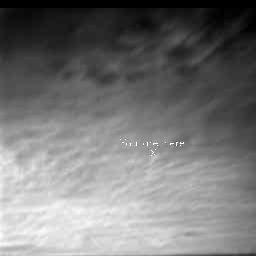
This is the first image showing clouds of Mars taken from the lander. Scientists know that the clouds are made of water. And there are weather patterns on Mars which resemble terrestrial storms. It is
...more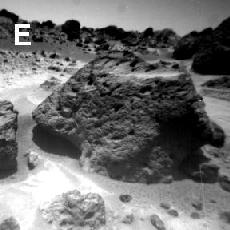
Sand is lifted and carried into the air by winds. The general process by which this occurs is called "saltation". Saltation becomes very powerful during the frequent Martian global dust storms. The rock
...more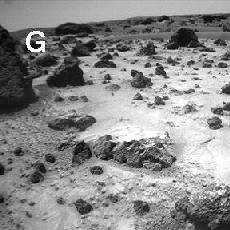
Unlike the rocks of Earth, where there are many things which cause erosion, the rocks of Mars erode because of only two things: wind and acid fog. Acid fog is very important, but because there is not a
...more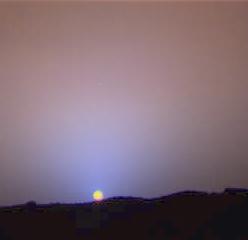
This is image of a Martian sunset illustrates just how thin the Martian atmosphere is. In this image, the Martian sky appears pink and a little bit dark at sunset. Unlike the Martian sky, the Earth's sky
...more
On Mars the surface winds accelerate to higher speeds than those on Earth. These winds can be whipped to an extreme during the frequent Martian global dust storms. The first weather measurements made from
...more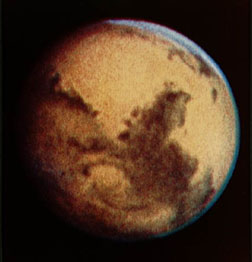
Mars is a bright, red object in the sky. It is very easy to see, which means that even people that lived long ago knew it was there. So, we don't know who discovered it. We do know it was named after
...more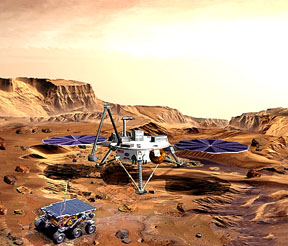
The Mars 2003 mission includes a lander and a rover. The mission will start sometime in May or June, 2003. The lander will carry the rover, and it will use rockets to help it land on the surface. The
...more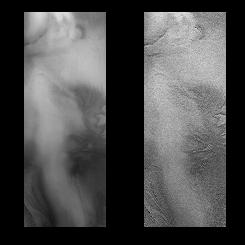
The Mars '98 lander was suppose to land near the south pole of Mars. This picture of the south pole was taken by the Mars Global Surveyor mission. Unfortunately, contact with the Mars '98 lander was lost,
...more













